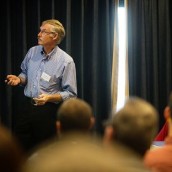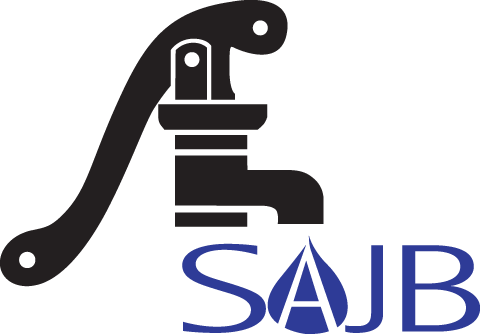Going with the flow
JEFF SELLE jselle@cdapress.com | Posted: Thursday, November 20, 2014 12:00 am
COEUR d’ALENE Regional hydrologists are close to understanding how pumping ground water from the aquifer affects the flow of the Spokane River. Three regional hydrologists presented some of their most recent findings and tools they have developed to measure those impacts Wednesday afternoon at the Spokane River Forum. Download PDF
Dale Ralston and Gary Johnson of Ralston Hydrologic Services joined John Porcello of GSI Water Solutions for a panel discussion focused on educating attendees on the hydraulics of the river and aquifer interactions.
Ralston started the panel by explaining the various reaches of the Spokane River from the  point where the water leaves Lake Coeur d’Alene on a journey downstream.
point where the water leaves Lake Coeur d’Alene on a journey downstream.
By the time that water gets to Post Falls, a little more than 30 percent has leaked into the aquifer and by the time the water reaches Greenacres, just more than 60 percent of the flow has been lost.
Pumping groundwater has no impact on the stretch of river between Lake Coeur d’Alene and Greenacres, but six miles into Washington the river starts to flow into the aquifer instead of leaking like it did upstream.
Closer to downtown Spokane, the aquifer begins returning the water that was lost between
Greenacres and downtown.
In those losing and gaining reaches is where groundwater pumping becomes more of a factor. Ralston said water managers now have two different types of models to help them better understand that interaction. He built one of them and Porcello helped build the other bistate model.
“It’s not just the modeling, but all of the studies that have been done out here that have helped inform this effort,” Porcello said. “There is a really solid understanding of how this aquifer really functions. One of the things you have heard already is understanding where these gaining reaches are. In other words, finding out where the aquifer is returning water to the river.”
What they have all learned about pumping groundwater is that it affects the river in a variety of ways depending on how long the pumping occurs and the well’s location in relationship to the various reaches of the river.
That’s where Johnson’s data helps. Using some of the modeling technology and data, he built an interactive spreadsheet that shows the impact of every large groundwater well on the aquifer.
By entering the well number, the volume of water to be pumped and the duration of pumping, these hydrologists can now see the actual impact on the river over a course of time.
They also discovered that pumping in any location over the aquifer never results in a onetoone trade in stream flows. In fact, depending on a well’s location, the flow of the river may only be reduced by a fraction of what was pumped.
“It’s not a drop for drop thing,” he said, adding that the range of flow loss will always be less that 100 percent of what was pumped.
This new tool and the ability to closely analyze pumping impacts has helped Johnson understand the correlation between the July flows on the river and the late August flows.
“It is really interesting, we just need to understand the hydraulics,” he said. “It’s all plumbed just like a house. We just need to figure it out. It’s not going to change.”
